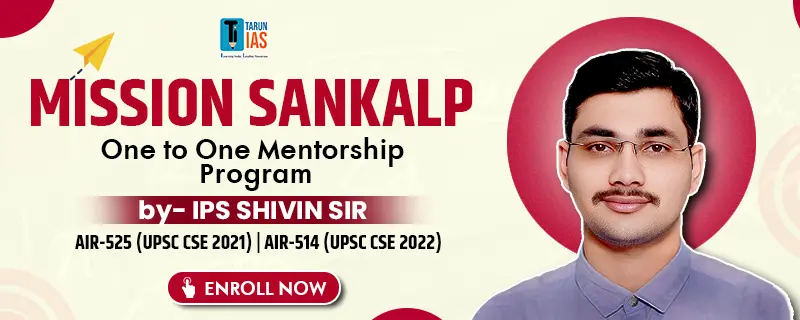UPSC GS 1
Siachen Glacier
- News: Siachen Glacier has got connected with 4G and 5G services, transforming communication for Indian Army soldiers at the world’s highest battlefield.
- Location: Positioned between the Saltoro Ridge to the west (a subrange of the Karakorams) and the main Karakoram Range to the east.
- Length and Significance: It holds the distinction of being the world’s second-longest nonpolar glacier, surpassed only by the Fedchenko Glacier in Tajikistan.
- Origin: The glacier originates from the base of the Indira Col West, a low point on the Indira Ridge.
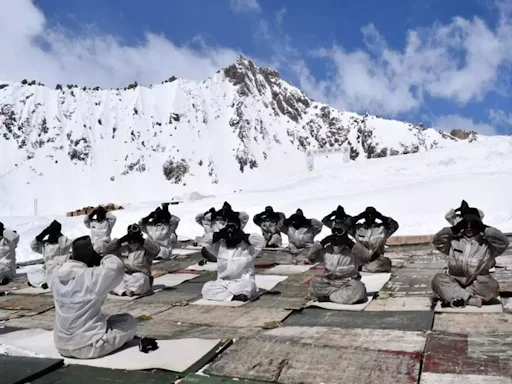
- Strategic Importance:
-
- Siachen’s location is highly strategic, dominating the Shaksgam Valley to the north, which Pakistan ceded to China in 1963.
- It controls key routes from Gilgit Baltistan to Leh from the west.
- It also holds dominance over the ancient Karakoram Pass to the east.
- Water Source: It is the primary source of the 80 km-long Nubra River, which is a major tributary of the Shyok River.
- Military Significance: Known as the world’s highest battleground, Siachen Glacier became a focal point of military conflict when India took control of it from Pakistan in 1984 during Operation Meghadoot.
Read also: California Wildfires: Causes, Impact & UPSC Notes
Cabo Verde
- News: The World Bank’s new report estimates that Cabo Verde, a small archipelago located off the coast of West Africa, will need to invest $842 million over 2024-2030, or $140 million per year, to address its climate and development challenges.
- Cabo Verde (Cape Verde): Cabo Verde, known as Cape Verde in the Anglosphere, is an African nation composed of 10 volcanic islands located in the Atlantic Ocean, off the northwestern coast of the continent.
- Geography: Cabo Verde is situated near Senegal, making it the nearest point on the African continent.
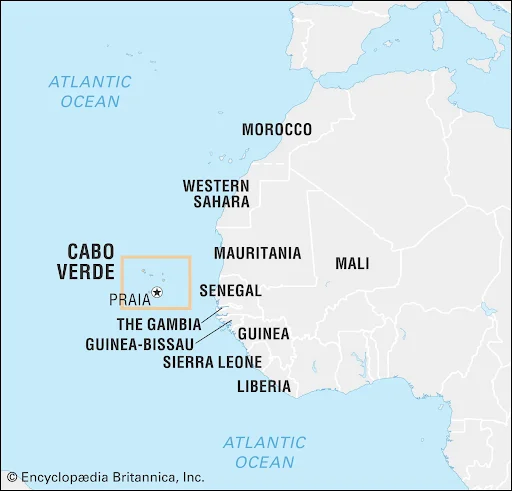
- Island Groups: The islands are categorized into two groups:
- Barlavento (Windward)
- Sotavento (Leeward)
- Terrain: The islands feature varied terrain, with the eastern islands being older and flatter, while the western islands are more geologically recent and mountainous.
- Climate:
- The climate is generally moderate, with stable temperatures.
- The region experiences extreme aridity, contributing to the scarcity of water resources.
- Population and Culture: The population is primarily of mixed European and African descent, commonly referred to as mestiço or Crioulo.
- Capital: Praia
- Languages: Portuguese (official language) and Cape Verdean Creole
UPSC GS 2
Bharat Ranbhoomi Darshan App
- News: Bharat Ranbhoomi Darshan” app was launched by Defence Minister Rajnath Singh coinciding with Army Day celebrations.
- Bharat Ranbhoomi Darshan:
- Bharat Ranbhoomi Darshan is an initiative developed by the Ministry of Defence in collaboration with the Ministry of Tourism.
- The app provides an opportunity for citizens to explore India’s historic battlefields and learn about its wartime history in a new and immersive way.
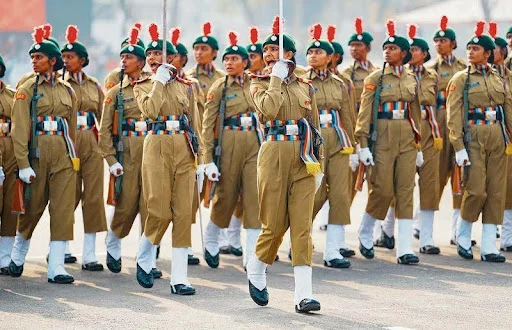
- Objective:
- The primary goal is to promote connectivity, tourism, and socio-economic development, particularly in the border regions.
- The Indian Army is working with local civil authorities to facilitate this initiative while ensuring high operational readiness in these areas.
- Features:
- Virtual Tours & Historical Insights:
- The app offers details on various battlefields and border locations, featuring virtual tours, historical narratives, and interactive content.
- These sites will be promoted as part of the “Incredible India” campaign by the Ministry of Tourism.
- Travel Planning:
- It serves as a one-stop platform for visitors to plan their trips, including guidance on how to obtain necessary permits for restricted areas.
- Selected Sites for Battlefield Tourism: The Indian Army and Ministry of Tourism have identified key locations for “battlefield tourism,” including:
- Galwan Valley in Ladakh
- Doklam, a tri-junction between India, Bhutan, and China
- 75 other forward sites along India’s border with China (Line of Actual Control) and Pakistan (Line of Control), which have seen military action since independence.
- Historical Significance of Sites:
- These locations have been sites of significant military action, such as:
- The 1962 war with China and the 1967 conflict at Nathu La in Sikkim.
- The Battle of Longewala during the 1971 India-Pakistan war, fought at the Longewala border post in the Thar Desert.
- Accessibility of Restricted Areas:
-
- Previously inaccessible due to their strategic importance and challenging terrain, these sites will now offer visitors a chance to experience the conditions faced by soldiers stationed in these remote regions.
PM-WANI Scheme
- News: Public Wi-Fi hotspot providers operating under the PM-WANI scheme have backed the telecom regulator’s recommendation for a price ceiling, but also called for more incentives to help them boost the proliferation of low-price internet.
- Definition: The PM-WANI scheme was launched by the Department of Telecommunications in December 2020 to expand public Wi-Fi hotspot coverage and strengthen the country’s digital communication infrastructure, particularly in rural areas.
- Objectives:
- Enhanced Connectivity: The scheme aims to accelerate the development of robust digital infrastructure, especially in underserved and rural regions.
- Employment Generation: It seeks to create employment opportunities for small and micro-entrepreneurs by enabling them to offer internet services.
- Affordable Internet Access: The initiative focuses on providing low-cost internet access to underserved urban poor and rural households.
- Local Participation: It encourages local shops and establishments to set up Wi-Fi hotspots for last-mile internet delivery without the need for licenses or registration fees.
- Accessing PM-WANI Internet:
- To connect to public Wi-Fi hotspots under this scheme:
- Download a compatible app that displays available networks.
- Select a network from the displayed list.
- Make a payment to activate access.
- Use the network until the purchased balance is exhausted.
- PM-WANI Ecosystem Components:
- Public Data Office (PDO):
- Responsible for setting up Wi-Fi hotspots and providing internet access.
- No license is required from the Department of Telecommunications.
- Public Data Office Aggregator (PDOA):
- Provides authorization, accounting services, and user interfaces for purchasing data plans and tracking usage.
- App Provider:
- Develops applications to help users locate nearby PM-WANI hotspots and connect to them seamlessly.
- Central Registry:
- Maintained by the Centre for Development of Telematics (C-DOT), this registry keeps records of App Providers, PDOs, and PDOAs.
UPSC GS 3
Intravenous Fluids (IV Fluids)
- News: The Calcutta High Court has directed the West Bengal chief secretary to file a report for the death of a patient at Midnapore Medical College and Hospital by ‘expired’ intravenous fluid.
- Intravenous Fluids (IV Fluids):
- IV fluids are specialized liquids administered through a vein to address or prevent dehydration. They are utilized for individuals of all ages who are ill, injured, dehydrated due to physical exertion or heat, or those undergoing surgery.
- The process of intravenous rehydration is simple, safe, and commonly performed with minimal risk of complications.
- Typically, IV fluids consist of water, glucose (sugar), and electrolytes like potassium, sodium, and chloride.
- An IV line may allow the simultaneous infusion of multiple fluids into the same location.
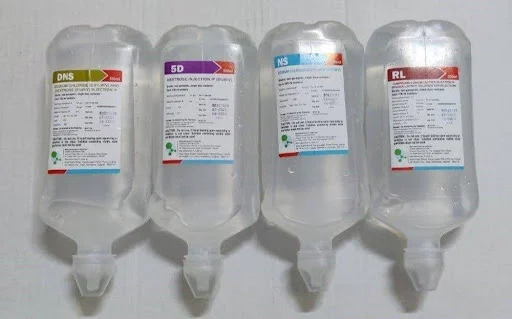
- Types of IV Fluids:
- Crystalloid Solutions:
- These are the most frequently used IV fluids.
- They contain small, dissolved molecules that are able to pass through the blood vessels and enter body tissues and cells.
- Crystalloid solutions are quickly accessible to your cells once they enter the bloodstream.
- Examples:
- Normal Saline: Composed of salt dissolved in water.
- D5W (Dextrose 5% in Water): A sugar solution in water.
- Lactated Ringer’s Solution: Contains sodium, chloride, potassium, calcium, and lactate, often used for more aggressive fluid replenishment.
- Colloid Solutions:
- These fluids contain larger molecules that are unable to easily pass through cell membranes and tend to stay in the blood vessels.
- In medical terms, colloid solutions remain intravascular, unlike crystalloid solutions that move into tissues.
- Examples:
- Albumin: A protein used to maintain blood volume.
- Hetastarch: A synthetic starch used to increase blood volume.
See more: Critical Minerals in India: A Comprehensive Overview | UPSC
Third Launch Pad (TLP)
- News: The Union Cabinet recently approved the establishment of a Third Launch Pad (TLP) at the Satish Dhawan Space Centre in Sriharikota, Andhra Pradesh.
- Third Launch Pad:
-
- The Third Launch Pad project aims to develop advanced launch infrastructure at Sriharikota, Andhra Pradesh, specifically designed for the Next Generation Launch Vehicles (NGLVs) of ISRO.
- It will also serve as a backup for the existing Second Launch Pad and help increase the capacity for future Indian human spaceflight missions.
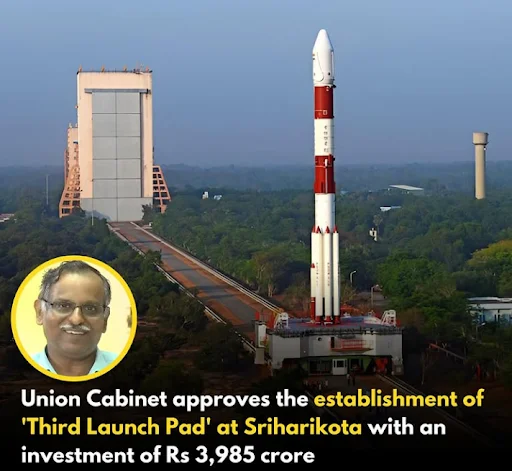
- Objectives and Implementation Strategy:
- Versatile Configuration: The Third Launch Pad is designed with a highly adaptable configuration that can support NGLVs, LVM3 vehicles equipped with the Semicryogenic stage, and scaled-up versions of NGLVs.
- Industry Participation: The project will involve maximum industry participation, building upon ISRO’s experience in constructing previous launch pads and leveraging existing launch complex facilities.
- Timeline: The target for completing the Third Launch Pad is 48 months (4 years).
- Funding: The total estimated cost for the project is Rs. 3984.86 Crore, covering the establishment of the launch pad and its associated facilities.
- Significance:
-
- Boost to Indian Space Ecosystem: The Third Launch Pad will enhance India’s space capabilities by enabling higher frequency launches and strengthening the nation’s capacity to carry out human spaceflight and space exploration missions.
- Current Launch Pads:
- India currently relies on two launch pads: the First Launch Pad (FLP) and the Second Launch Pad (SLP).
- FLP: Established 30 years ago, it is used for PSLV and continues to support PSLV and SSLV launches.
- SLP: Primarily built for GSLV and LVM3, it also serves as a backup for PSLV. Operational for nearly 20 years, it has increased launch capacity and supported national missions, including the Chandrayaan-3 mission.

